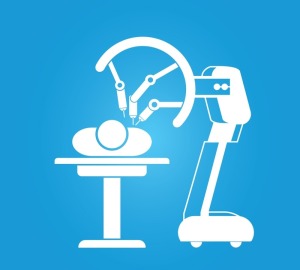Robotic-assisted laparoscopic prostatectomy yields significant cost savings: study
by
Lauren Dubinsky, Senior Reporter | March 29, 2016

Robotic-assisted laparoscopic prostatectomy (RALP), compared to retropubic radical prostatectomy (RRP) can dramatically cut costs for hospitals, payors and society, according to a Mount Sinai Health System study recently published in Value in Health.
"This study again demonstrates that quality robotic-assisted clinical outcomes can drive significant downstream savings," Dr. David Stoffel, vice president of marketing and new business development for Intuitive Surgical, told HCB News. "From patients to payers, the robotic-assisted minimally invasive surgery value proposition spans the entire healthcare spectrum to benefit patients, hospitals, payers and society."
The American Cancer Society estimates that there will be about 180,890 new cases of prostate cancer in the U.S. for 2016. The cumulative cost of prostate cancer on average is $42,570 over five years, according to a study published in the journal CANCER.
RRP is a surgical procedure that involves removing all of the prostate gland and some of the tissue around it. RALP is a minimally-invasive procedure that’s performed with a surgical robot, such as Intuitive Surgical's da Vinci Surgical System, to remove the prostate with minimal damage to the surrounding tissue.
The researchers investigated the financial impact of RALP versus RRP by conducting a systematic peer-reviewed literature search for clinical outcomes and creating cost models for assessing the costs for hospitals, payors and society.
They found that when compared to RRP surgeries, RALP procedures using the da Vinci Surgical Systems led to 99 percent cost savings for payors, 83 percent for society and 38 to 79 percent for the individual hospital. That equated to $1,451 per patient for the payors and $1,202 per patient for the society.
What makes this study different from other studies that compared RALP and RRP is the fact that it was not limited to a single cost model like, for instance, direct hospital and robotic system costs. Instead, it looked at three different cost models to get the bigger picture.
The study also calculated the costs of the robotic system in terms of the hospital’s overhead including hospital costs, inpatient bed and inpatient days, which resulted in savings of $1,094, and the cost associated with the annual volume of robotic procedures, which was $341 in extra costs.
That means that potentially higher robotic surgical expenditures are outweighed by the cost savings associated with better clinical outcomes, including fewer complications, better functional outcomes and faster recoveries.
“This study further demonstrates that hospital administrators need to look beyond visible operating room costs when analyzing the robotic-assisted surgery value proposition,” Dr. Myriam Curet, senior vice president and chief medical officer at Intuitive Surgical, said in a statement.
Intuitive Surgical has been the leader in the surgical robotic market for the past 15 years, but two new surgical robotic systems are expected to come to the market this year. Those systems are Titan Medical’s SPORT system, which is for general abdominal, gynecologic, urologic and colorectal procedures, and TransEnterix’s SurgiBot robotic system, which doesn’t have any known indications yet.
Stay tuned for our April magazine issue where we'll explore this topic in-depth.
|
|
|
You Must Be Logged In To Post A Comment
|
